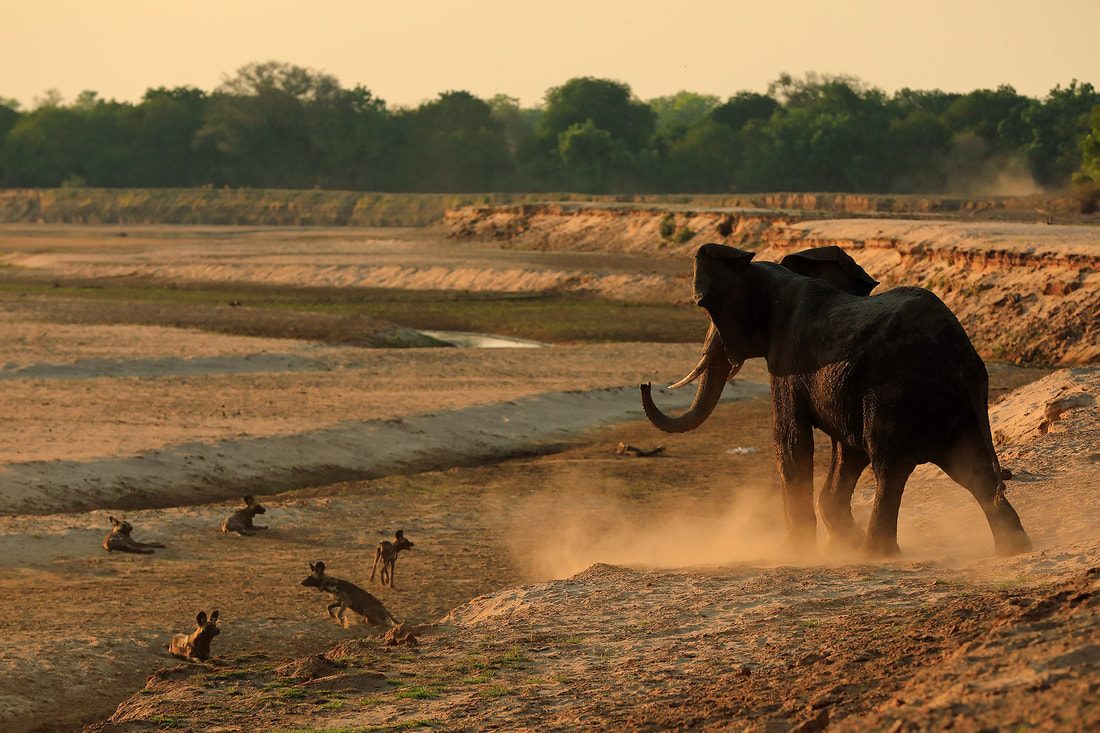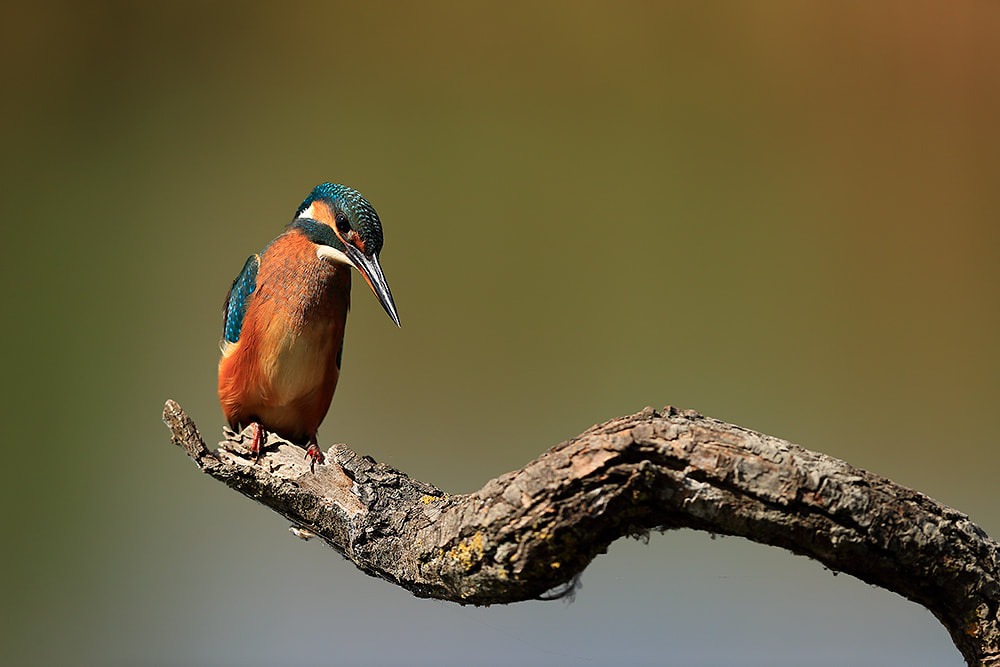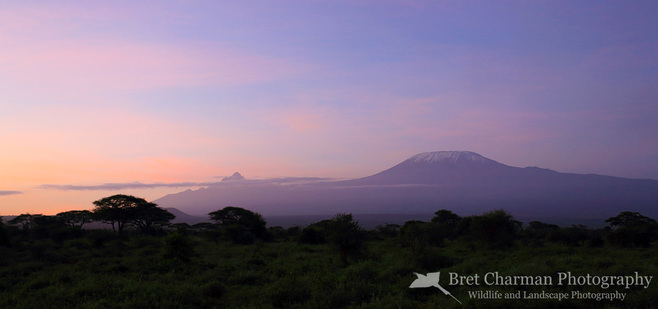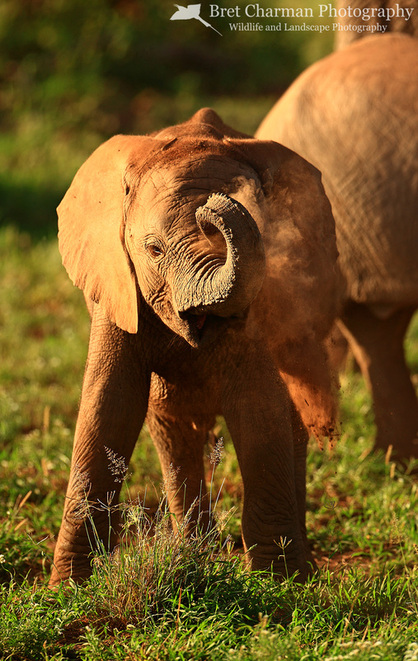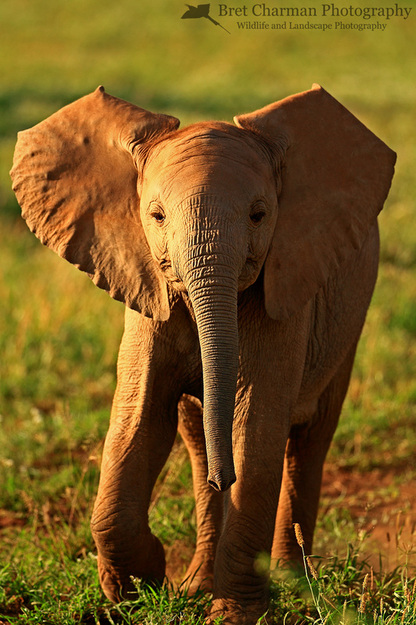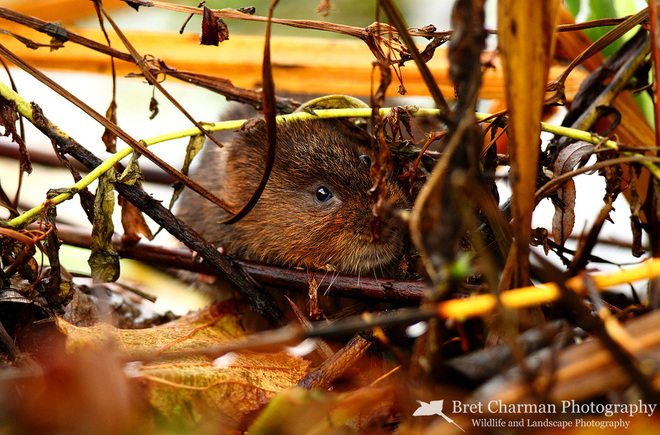|
Sorry I have been quiet again for the first quarter of the year. It has been a crazy few months and I am only just getting the time to sit back and think about the past 5-6 months. Back in November I was in a state of shock as I was actually able to enjoy leading my first African photo safari in nearly 2 years. Wildlife Worldwide were finally able to run our unique South Luangwa Photo Safari and it was a pleasure to be at the helm for two separate trips. Our first trip was based at one of my regular haunts – Flatdogs Camp – where I had the pleasure of my good friend and guide Bwalya looking after us. We had an exceptional week with Bwalya, although the leopard didn’t quite play ball, and were treated to some excellent encounters with the African wild dogs and countless lions. The second week was based at the delightful Mfuwe Lodge and we had some exquisite sightings of leopard and the wild dogs once more. The rains had started to fall intermittently, but it really didn’t disturb our game drives and huge thanks must go to our excellent guides . One of the great things about South Luangwa is that you never really know what to expect and from one week to the next, you will likely see something completely different. Here is just a taster of what we saw … If you would like to join me in Zambia's South Luangwa with Wildlife Worldwide, there are still some spaces available. I will be joined by fellow photographer Sean Weekly, and I will be back for more in 2023.
0 Comments
Back in September I went on a trip for Wildlife Worldwide to Romania’s Danube Delta (for the first time). I had heard great things about Europe’s largest river delta and knew whatever happened, I would experience somewhere completely different to anywhere I had been before. I stayed at the purpose-built property known as Ultimate Frontiera. Specially designed for wildlife photographers , the purpose-built hides are spread across the estate and provide the opportunities to photography a myriad of different species. On my first morning in the hides I was hoping to photograph the pygmy cormorant, an elusive and rarely seen species. I did get a couple of shots of pygmy cormorant, but it was a common kingfisher that proved to be a real delight, posing perfectly in front of the hide only a few metres away. I have tried photographing kingfishers in the UK and never had any luck, whether it be from purpose-built hides or sitting patiently on a river bank. So, finally, to be rewarded with shots like this was a real treat. It wasn’t just kingfishers that proved to be particularly cooperative, we were treated to some great views of little owl, a wide variety of small woodland passerines, squacco heron and great white pelicans. We were even luckier in the fact we got to see a solitary Dalmatian pelican, of which there are fewer than 2,000 left in the world. It also proved to be a particularly reliable place to photography golden jackal, which are moving further west into Europe each year.
It was a great place for anyone with a passion for bird photography, and I can only imagine that during the spring it is full of life. I highly recommend you join Wildlife Worldwide in May to get your very own Romanian bird photography fix. I hope you like the pictures – and don’t forget to head off to Romania and see it for yourself! Today was going to be our first day in the spectacular Amboseli NP, and as soon as we had woken up the spectacular Mt Kilimanjaro towered above us. I honestly can't describe just how amazing this location was, photographs really cannot do it justice and I can only recommend you go there and see it for yourself. So after waking up in this truly spectacular landscape, it was time to head out into Amboseli for the first time. The park entrance was incredibly tidy and extremely formal, especially when compared to that of the Maasai Mara. Amboseli is famed for its Elephant population and it wasn't long before we sighted our first herd. It was immediately clear this herd was much larger than those we had seen in the Mara and the warm, morning light was perfect for some photography. There was a really cheeky youngster who was showing off for us and we were happy to take some nice portraits. We also had the opportunity to photograph a few different species of bird as we moved from different groups of the extened herd of Elephants. We moved on towards the plains of Amboseli heading towards Lake Amboseli. This lake remains dry for much of the year but the surrounding landscape provides grazing for the Elephants and a large number of other plains game. There are big cats here too but they not seen as easily as they are in the Mara. We weren't really here for the big cats though, the Elephants were our real focus for the day. After lunch we decided to head towards Lake Amboseli and see if we could get some Elephants walking across the dusty expanse, with the big skies providing a dramatic backdrop. Gerry set us a mini photographic challenge, to go out with an aim to capture a small portfolio of images, each image fitting into its own category. Things didn't all go to plan with this though, we got a little distracted about half way through the drive as we travelled across the, now dry, Lake Amboseli. We did come across a large herd of Elephants heading towards the swampy ground, and that was when I made a fundamental error, I ran out of memory card space. I missed countless shots and I only had myself to blame!!! Anyway, we headed onwards towards the lake and came across a posing Yellow Baboon as well as a beautiful Brown-hooded Kingfisher. These certainly fulfilled the Portrait category of the challenge set by Gerry. It was then that we headed out across the plains towards the dry and parched landscape of what was once Lake Amboseli. It is hard to describe this landscape, it seems more like a desert than anything else and there were plenty of mirages. It is easy to see why people confuse these for water! Not much wildlife, but my word the photographic opportunities presented were entirely different ... When we got out into the lake proper, we decided it was time to stop and take some pictures of this epic landscape. With drinks in hand and the warmth of the afternoon sun we had a fantastic time. I cannot describe how amazing this place and I only hope the following photos show you that you have to go there for yourself! So after our finishing our drinks and our fun in the sun we suddenly realised it was getting pretty late, we had 25 minutes to get back to the gate and leave the park. Amboseli is much stricter than the Mara and it was essential we got out on time to keep in the park guards' good books. We were treated to an amazing sunset as we headed back to camp, trying to photograph it on the move was not quite so easy though!
I will be adding a video of this exciting journey back to camp at a later time. Thanks again to Gerry and Andrew for their excellent guidance and thanks to all the guides and participants for making the day so enjoyable. After an extremely comfortable night in the luxury of the lodge, we awoke bright and early to head out onto Lake Naivasha. We left a little later than planned and eventually we got out in the boats. Our primary target would be the African Fish Eagles and the other birdlife that frequents this incredibly picturesque spot! In fact if you are keen on your birds then this is the place to go. Lake Naivasha and the surrounding area is home to over 350 species of bird and quite a variety of mammals too. Amazing to think, as there is also a thriving flower growing industry around the lake too! So we headed out, making our way through the acres of Water Hyacinth, and almost instantly came across some Hippo. It wasn't long before the different species of Cormorant came into view, as well as several types of Egret. We had to wait a little while for the Fish Eagles but eventually we were treated to the silent and extremely elegant sight of them plucking a fish from the water's surface. Admittedly these fish had been thrown by our helmsmen and the eagles never truly cooperated, always deciding to catch the fish facing away from us. None the less this is an amazing sighting and well worth the effort involved. This is actually the second time I have been to lake Naivasha and I am sure it is not the last time I will pay a visit. What an amazing morning it was out on the boat, there was never a dull moment and always plenty of photographic opportunities. It really was a fantastic couple of hours, the bird photography here (as you can probably see) really is top notch and I think if we got out on the water a little earlier, we could have captured some amazing Fish Eagle photographs too. This was such a contrast to the Maasai Mara, with a very different focus, and it really was a great way to break up the journey between the two National Parks. Before we left Sopa Lodge, we had a great Colobus Monkey photography session. The Colobus Monkeys decided to pose nicely for us in the trees, right by the lodge entrance and we of course were happy to photograph them! After a short spell with some of the specatular Superb Starlings and the monkeys too, it was time to head off and make our way to the foot of Mt. Kilimanjaro and Kenya's stunning Amboseli NP. This might have been around the time that I had a little incident. Whilst focusing on the monkeys and not really paying all that attention to my surroundings, I might have fallen down a small drainage ditch. In the process I managed to fall over in a rather comical manner, ensuring at all times that the camera was safe and sound above my head. I did however manage to rip my toenail off and had to spend the next 10 minutes bandaging myself up. All is well now though, for any of those concerned ;) Again, thanks must go to Wild Eye for organising another fantastic day. The photographic opportunities, as ever, were absolutely superb and our photographic tour leaders Gerry and Andrew were great. Some great driving by Joseph ensured that we made it safely to Amboseli, after an interesting drive around Nairobi and out to the East then onwards, back down towards the Tanzanian border.
I would also like to dedicate this to an old school friend, David Griffiths, who sadly passed away last week. He was planning on running the London Marathon next month. If any of you could donate a small amount of money and help him reach his total that would be amazing: http://uk.virginmoneygiving.com/fundraiser-web/fundraiser/showFundraiserProfilePage.action?userUrl=Griff2013. On an extremely cold winters day, with the air temperature barely above zero, I headed off into the countryside around where I live. I had no aim or target species, it was more of a "let's see what is about". So I went to a few spots in search of a few species that I really want to photograph at some point, those are Kingfisher, Water Rail & Water Vole again. After a couple of hours I did find Kingfisher, but at distance and I also found Water Rail, but alas I could only hear it, there was absolutrly no sign of the Water Vole though ... I decided to head into the small town of Alresford so I could check out the watercress beds that surround the town, and when I arrived there were a whole host of different species feeding amongst the crop. The most common of all the bird species was the Grey Wagtail with 4-5 individuals, but there were also Pied Wagtails, Robin, Blackbird, Wren, and Long-tailed Tits in the trees above. To start with, the birds were a good 25 yards away and with a 300mm lens it is pretty tricky to get a subject that small sharp. I got a few that I thought worked quite well. This Grey Wagtail was full of character and watching them "wag" their way around the cress beds was intriguing. They were feeding quite frenetically but more often than not they seemed to be successful. The image below, really sums up the personality of the Grey Wagtail for me. The pose shows their cheeky and inquisitive nature and you can see the scale of the feeding area compared to such a tiny creature. There are only a few beds here but I think they must provide an important feeding area for the local population of insectivorous birds. I sat down on the edge of the beds, with my camera resting on my knees. I watched this individual for nearly half an hour firing off around 50 shots, being selective with the pose and the lighting. Eventually my patience was rewarded and the small, colourful character headed straight towards me. It was making its way across the Watercress when a dog walker came down the path, the bird stopped feeding and stood in this striking pose (below), alert to what could have been "a dangerous encounter". My little feathered friend was not deterred and it continued its wagging search straight towards me. Whilst they are looking for food, as it isn't always immediately obvious, they occasionally upturn the leaves of the cress, hoping to find a tasty morsel of food. As I was photographing this, the shutter noise seemed to become apparent to the bird and it was then that I caught this pose, moments before it moved a few stems of the cress. My favourite photo (below) was one of the last, the individual had come closer still and was continuing its advance until another dog walker came by. It then quickly made its exit, flying in its tell tale "sound wave" pattern, with a rise and a fall, before finding another feeding spot a hundred yards away. The winter sun provided the perfect lighting, bringing out the bird's colours and giving its surroundings that rich healthy hue. The Watercress itself grows throughout the year with the waterflow constant and lightweight covers offer protection from the coldest night's frost. The unattended beds, such as this, provide one of the few insect rich feeding areas throughout the winter. I hope to go back their soon and find another position where I can get a lower point of view. What a beautiful winters day it was and I hope to see many more like it in the coming few months.
Back at the start of the summer, some of you might remember that I was lucky enoguh to have a Water Vole living right outside the office front door. After a summer of heavy rain, plenty of food and lots of waterways to explore this Water Vole disappeared. There was the odd occasion where one of my colleagues would hear the tell tale "plop" as it ducked underwater. Now, much to my delight, it seems to be back in the mill stream enjoying the vegetation and perhaps even the small amount of shelter and warmth the old mill provides. So over a 20 minute spell I went out with my camera and got rather close, in fact at one point it was probably only 2 feet away from ... well my foot! I hope you like looking through the portraits. The first image, below, was the furthest the Water Vole was away from me throughout the session. All of the images were shot at an Aperture of f/2.8 or f/3.5 which helps the vole stand out a little better from the vegetation. Ideally I would have loved to have been in the water to get the lowest angle possible, this might have to wait for another day. I lost sight of the vole at one point as he went off under the mill, I assumed he was going to disappear so I moved to the edge of the mill stream only to realise he was actually coming round and ended up only a couple of feet away. I was absolutely amazed, the vole knew I was there and I made my movements very deliberate so as not to scare it off. I slowly moved backwards as I didn't want to be too close and once I got a couple of metres away I tried to get a couple of images. The image below was my favourite from the mini series of images. The image below was by far my favourite of the short session. The Water Vole had been moving to and fro feeding on the surrounding vegetation and was repeatedly returning to this spot to nibble its salad. The light improved and the little fellow turned to look at me, perhaps wondering what the noise of the camera shutter was. I love the colour, the composition and of course the cute factor of this little chap! A really wonderful way to spend 20 minutes on a cold morning. Winter is definitely coming, the nights are getting longer and longer and the cold is starting to bite. It makes you appreciate the slightest bit of decent weather and when you get an opportunity to photograph something as lovely as this small mammal, then you really have to make the most of it.
Before I go to Kenya next week I thought I would have a look through some of the photographs taken when I was working in Zambia's South Luangwa National Park last year. I decided to show a few Kingfisher photographs, some of which you may have seen, others probably not! The Hardest thing about photographing these birds is their nervous nature. They are very alert, with fantastic eye-sight, and if you make one false move they will be on their way. The Brown-hooded Kingfisher was particulrly nervous and took flight after the slightest sign of movment.
|
AuthorBret Charman Archives
July 2024
Categories
All
|













